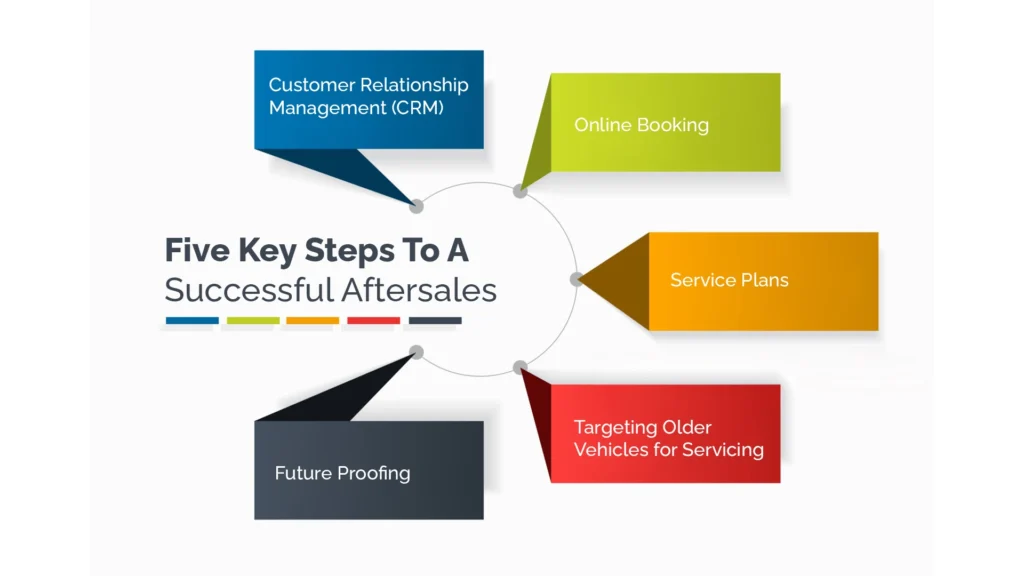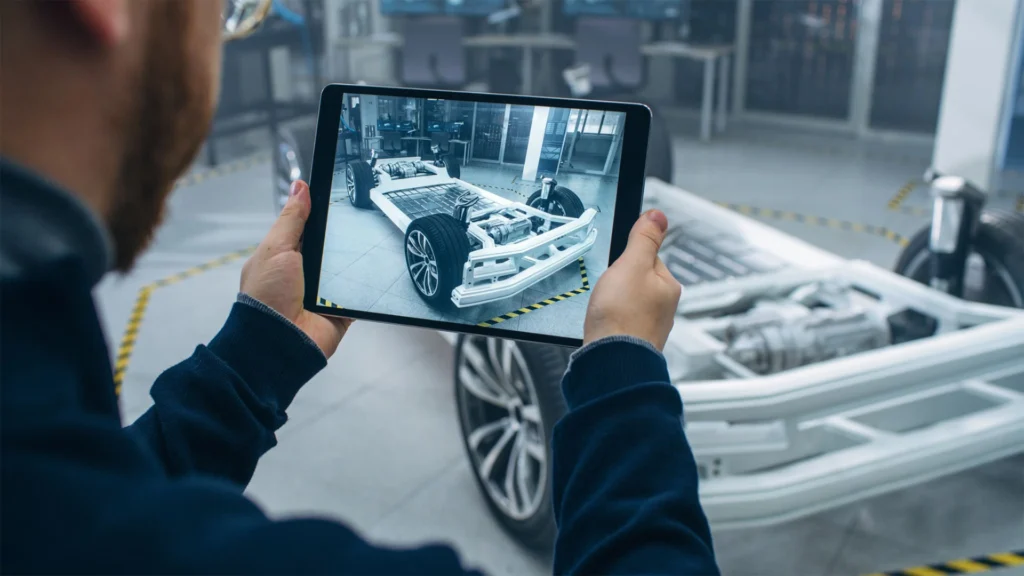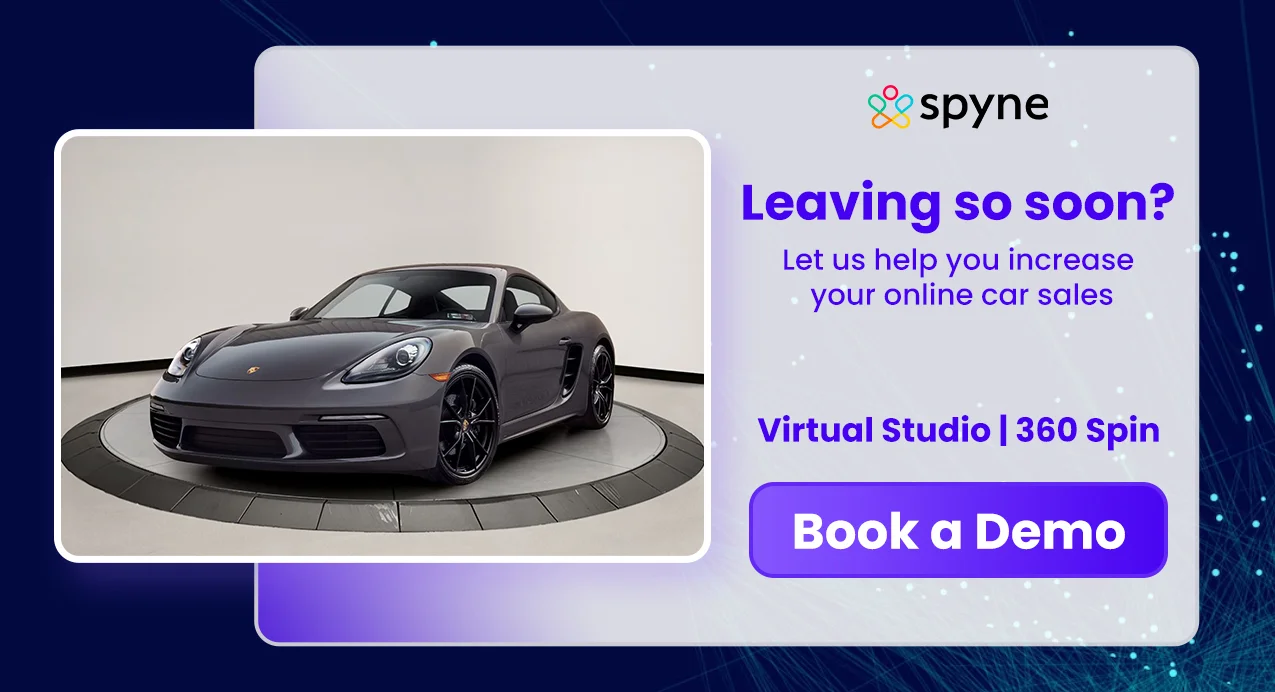We all have experienced this; one buys the first car with lots of dreams and aspirations. It is, in a way, the beginning of a new relationship between the customer and the brand. Though the very first purchase would always be memorable for its emotional and exciting factor, it’s the automotive aftersales experience that really builds up trust and loyalty. Just imagine the customer receives an update on servicing and regular maintenance at the right time of repair along with a good support group listening to him/her. That’s where the connection gets further strengthened. In fact, a latest study indicates that 45 percent of customers switch brands just because of not getting good customer services, making automotive aftersales marketing critical points to be accounted for in loyalty.
This becomes more critical in this industry as it is not only a supporting function but it is something that could be a boon to your business. A well-planned aftersales strategy will go beyond ensuring customer satisfaction. It turns the customer into an ardent advocate for the brand, ensuring repeat business and improved reputation. In this guide, we will explore why aftersales is so important, share successful strategies, and address the challenges that come with it. You can be an automobile dealer or someone in an auto company, this article will give you a heads up on this industry.
What is Automotive Aftersales?
Automotive aftersales include processes that ensure customers are satisfied with the products and services. It consists of factors such as spare parts, workshops and services, customer care, and customer lifecycle management for automobiles. When a customer makes a purchase, they consider the availability of genuine spare parts and well-trained mechanics in their decision-making phase. It is a must to fulfill the needs and demands of customers so that they will spread positive word of mouth, which helps in the promotion of brand products and services.
The focus on the process helps increase customer satisfaction and creates brand awareness in the targeted auto market. Today, the aftersales business contributes as much as 50% to the overall profit of the auto industry, and more than 40% to the gross profit of large, full-range dealerships (despite accounting for only 10% of the dealership revenue).
Why is Aftersales Service Important?
Most automotive companies end up paying more attention to prospective customers as they want to grow their customer base. They put more time and effort into converting automotive lead generation and prospective buyers into customers. This results in a cycle of investing in the pre-sales experience without investing time and effort in the post-sales experience. Aftersales service is critical for the longevity of one’s business for these 4 benefits:
1) Word-of-mouth Referrals
Happy customers always refer your brand to family or friends. That is why they are valuable assets to your business. Positive word-of-mouth from satisfied customers can drive up to 50% of total sales. Also, satisfied customers have a 16% higher lifetime value. Delivering good aftersales service increases the number of customers willing to provide referrals.
2) Positive Brand Image
9 out of 10 customers read reviews before making a purchase. A negative customer review can hurt even the most well-known brand. Excellent post-purchase experiences attract positive reviews, which enhances the overall brand image. Being seen as a trustworthy brand is important to make customers stick around.
3) Customer Loyalty
The purpose of aftersales service is to increase loyalty among customers and make them your brand advocates. Engaging your customers regularly and equipping them with helpful resources enhances customer satisfaction and retention. Excellent customer service even backs an average product or brand.
4) Increase in Revenue
Existing customers spend more than new customers. If you treat your customers well, they keep returning to your brand. Most happy and satisfied customers become brand loyalists who bring in new customers, driving sales and increasing revenue.
Five Key Steps To A Successful Aftersales
A successful market strategy is crucial for car dealers to hit their targets, retain customers, and attract drivers with older vehicles. Here are five main strategies that can enable aftersales departments to achieve these goals:
1) Customer Relationship Management (CRM)
A good CRM system is essential for after-sales success. It helps keep track of customer interactions, service history, and preferences, allowing for personalized communication and targeted automotive digital marketing. This leads to happier, more loyal customers. Dealers should use CRM to send service reminders, special offers, and follow-up for feedback.
2) Online Booking
Online booking makes scheduling service appointments easy and convenient for customers. It allows them to book maintenance and repairs at any time without needing to call the dealership. This improves customer experience and helps manage the workshop schedule more efficiently. Dealerships should have an easy-to-use online booking system, send automated reminders, and ensure real-time availability updates.

3) Service Plans
Offering service plans can boost customer retention. These plans let customers prepay for regular maintenance at a discounted rate, ensuring they return to the dealership for service. Dealers should offer flexible service plans that fit different needs and budgets, clearly explain the benefits like cost savings, and update the plans regularly to keep them attractive.
4) Targeting Older Vehicles for Servicing
Older vehicles need more maintenance, making them a valuable target for after-sales departments. By offering specialized services and promotions for these cars, dealerships can attract more customers and increase service revenue. Automotive marketing campaigns aimed at older car owners, tailored service packages, and discounts on parts and labor can encourage regular servicing of these vehicles.
5) Future Proofing
As electric vehicles (EVs) and connected cars become more common, dealerships need to adapt. Future-proofing the aftersales department means staying updated on industry trends and technology. This includes training technicians to service EVs and connected cars, keeping up with the latest diagnostic tools, and partnering with tech providers for advanced services like remote diagnostics and software updates.
How Can Data be Used to Improve the Aftersales Process for Lead Generation?
In the world of selling cars, data is no longer just a buzzword; it’s the secret to victory. Imagine knowing what the customer needs at the right time when the need arises, and the best way to convey that information with a targeted message that will ring home. That is the magic of using data the right way when you are conducting automotive aftersales analysis.. With the right insights and automotive marketing software car dealerships will not only improve their after sales experience but unlock a new level of lead generation that’s smarter, faster, and more customer-focused. Ready to turn data into your dealership’s next big advantage? Let’s dive into this with Spyne!
1) Clean, Structured Data
It all starts with good data. But what’s “good” data? Information that’s clean, organized, and tells you exactly who your customers are and what they need. That’s what data means. Once you know everything about your audience inside and out, you can create assets to engage them like blogs, case studies, and interviews, that speak directly to their pain points, requirements and interests. This builds trust, attracts more leads, and keeps you ahead of the competition.
2) Reliable Data Sources
Bad or unreliable data is a recipe for disaster! If you’re using outdated or inaccurate information, your efforts to generate more sales won’t be fruitful at all. The key is to partner with reliable data sources. Whether it’s gathering insights from surveys, tapping into government reports, or working with trusted providers, you need data you can count on to make informed decisions, especially when you’re delving into automotive aftersales marketing.
3) Get a Complete Picture of Your Prospects
The more you know about your prospects, the better. It’s more than just about the age or location; it’s about truly understanding the buyer’s motivations, their challenges, and their buying habits. With correct data gained from credible channels such as social media, feedback from customers, and even the public records, you can construct rich profiles, and hence connect with them in a manner that actually resonates with them.
4) Actions Backed Up By Research
Say goodbye to shooting in the dark. You can create buyer insights that actually go beyond simple demographics and age. Now you can really dive deep into the customer psyche and gain deep insight into what gets them going, their motivations and reasons for purchase. This lets you craft content and messages that talk directly to what they need and want, therefore upping the ante on getting their attention.
5) Personalize Your Communication
Personalization is everything. You’re going to get better marketing messages to the leads because you’ll have segmented your leads according to their individual needs. You would know exactly what they care about so you speak directly to those interests. Monitor and regularly check up on your segmentation strategy to see if it is still appropriate for the ever-changing needs of your audience.

6) Data-driven Segmentation
Personalized communication is key to data-driven lead generation. By leveraging client data and insights, you can create targeted messages that speak directly to your target audiences, building trust and increasing engagement. Use client data to create personalized offers tailored to individual clients, which can help increase conversions and enhance your content marketing strategies.
7) Lead Scoring and Nurturing
Lead scoring and nurturing are essential components of a data-driven lead generation strategy. By using data to score and nurture your leads, you can more effectively target your car dealership marketing efforts and resources, resulting in improved ROI and increased sales. Automating your lead nurturing process helps you stay top-of-mind with prospects without extra effort.
8) Clearer Attribution
Attribution helps you understand which marketing efforts are driving results. Ensuring clear attribution in your data-driven lead generation strategy is crucial. Use different attribution models like last touch, first touch, linear, time decay, and position-based to assign credit for conversions and sales to the right touchpoints. This helps you optimize your marketing efforts for better results.
9) Prioritize Sales Readiness
Prioritizing sales readiness means focusing on generating leads that are ready and willing to buy what you are offering. Consider factors like your products or services, target market, sales cycle, and marketing budget. Create highly-targeted content that addresses your target market’s needs, communicates directly to their pain points, and keeps you ahead of competitors.
10) Improve Engagement
Improving engagement with your target audience is the first step in creating a data-driven lead-generation strategy. You can enhance engagement by creating targeted content like blog posts, infographics, and webinars that are relevant and interesting to your audience. Build a strong social media presence on the platforms your audience uses most, and develop a solid dealership email marketing strategy to regularly send out quality content.
Car Sales and Automotive Aftermarket in 2035
The future of automotive sales and aftersales is poised for significant transformation driven by technological advancements. By 2035, the following developments will not only alter consumer behaviors but also revolutionize industry standards and business strategies on a global scale:
Connectivity
By 2035, we expect that every car will have basic connectivity features, with about one-third being fully connected. This means cars will be more integrated with the internet and smart technology. Consumers will value these connected services more, leading to a significant shift towards buying cars online and using digital platforms for sales and after-sales services.
Alternative drivetrains
In this industry, different types of vehicle power systems will exist together, with battery-electric vehicles (BEVs) becoming the most popular. Furthermore, the rise of alternative drivetrains will vary by region and will be influenced by lower production costs, new regulations, better-charging infrastructure, and improved vehicle performance. These factors will drive the transition from traditional internal combustion engines to electric and other alternative power sources.
Shared mobility
The concept of shared mobility is set to grow, where people will increasingly use shared vehicles instead of owning them. This will increase the use of each vehicle and shift ownership from private individuals to fleet operators, such as ride-sharing companies. As autonomous driving technology develops, mobility services will expand even faster, making it easier and more convenient for people to use shared vehicles.
Autonomous driving
Autonomous driving technology will continue to advance, but the biggest challenge will be moving from level 3 (where the driver must be ready to take control) to level 4 (where the car can handle most driving tasks on its own). By 2035, level 4 and higher autonomous vehicles will likely be used in specific scenarios, such as within certain city areas or for specific services. In a more disruptive scenario, we could see a large number of fully autonomous vehicles being used widely across all regions.
Key Findings of the Study: The Future of the Markets of Europe, China, Japan, and the United States
According to the study, the compound annual revenue growth rate of the proxy automotive OEM is expected to remain stable at 3% from 2018 to 2035 in the base case scenario. Among these markets that were studied, China is projected to contribute the most to overall growth, while the EU5 and Japan are forecasted to show only modest or minor increases, with declines in traditional business segments that may only be offset by growth in new areas. Despite optimistic global revenue trends, profitability concerns persist unless significant transformation occurs within OEMs.
In terms of vehicle sales, the study forecasts a 25% growth for the proxy OEM in the base case scenario, driven primarily by China and to a lesser extent, the United States. Conversely, both new and used car revenues are expected to decline in the EU5 and Japan. Across all markets, there is a significant shift from private vehicle ownership to fleet usage and from traditional showroom sales to online channels, underscoring the critical importance of mastering omnichannel and direct sales strategies.
Looking forward to 2035, the study predicts an 11% decline in the business for the proxy OEM, even in the base case scenario. More disruptive scenarios could lead to even sharper declines. Emerging industry trends, particularly the adoption of alternative drivetrains, pose a significant risk to current aftersales profitability among OEMs. China stands out as the only market where the aftersales business is expected to grow, fueled by increased vehicle aftersales despite a strong shift towards alternative drivetrain technologies.
Challenges Ahead in Automotive Aftersales
The landscape of our services is undergoing significant transformation, driven by technological advancements and shifting consumer preferences. Automakers and dealerships have invested heavily in enhancing customer satisfaction and expanding service offerings for dealership profitability. However, amidst these advancements, several challenges loom on the horizon. Following are the possible key challenges in the future of automotive aftersales:
1) Reduced Service Demand: As vehicle quality improves and manufacturers focus on managing warranty costs efficiently, there could be a decline in the frequency of service visits per vehicle across most markets.
2) Impact of Connected Vehicles: The rise of connected vehicles allows for remote diagnostics and services. This shift may lead to a decrease in revenue from traditional in-person services and parts as more maintenance tasks can be performed remotely.
3) Declining Customer Retention: Automakers are struggling to retain customer loyalty, especially among owners of older vehicles. Many of these customers are opting for independent service providers that often offer more affordable servicing options.
4) Competition from Independent Service Stations: Independent service stations are becoming more competitive by offering lower-priced services compared to manufacturer-owned workshops. This trend is diverting business away from automaker service centers.
5) Digital Platform Entry: Major digital players like eBay, Amazon, Alibaba, and Tencent are entering the aftermarket spare parts business. Their entry into the market could potentially reduce profit margins for automakers and traditional parts suppliers.
6) Rise of Independent Dealerships and Mobile Services: Independent dealerships and mobile service providers, such as CarShop, CarSense, and ClickMechanic, are gaining popularity. They offer customers convenient, cost-effective, and digitally-driven service options, further challenging traditional dealership models.
7) Challenges in Building Customer Loyalty: Despite efforts to integrate sales and service experiences, many automakers have struggled to create strong customer loyalty that translates into repeat vehicle purchases. This was a key expectation behind establishing combined sales and service outlets, but achieving this synergy has often proven difficult.
Role of Technology in Automotive Aftersales
Technology is the biggest disrupter for this industry. It has compelled the industry to change and become more intelligent and customer centric. With new developments and innovation popping up every now and then, the one area where we are witnessing major change is the altered relationship of auto dealerships and companies with their customers. Through digital tools and platforms, today’s dealerships offer personalized experiences, streamlines processes, and makes responses faster.
Technologies like Customer Relationship Management etc. and helping automobile companies track the history of the servicing, send reminders regarding scheduled maintenance at the right time, and also give customized offers to customers, increasing automotive customer experience as well as retention. Other innovations, like AI-driven chatbots, virtual assistants, and automated systems of follow-up, also allow customers to get instant assistance, scheduling, and information updates 24/7. Through predictive analytics, businesses can predict the needs of customers beforehand and, in turn, be proactive in their services, cutting downtime for the vehicles and improving overall satisfaction. Technologies improve efficiency, build trust, and ensure customers remain loyal after the initial buy.
Emerging Technologies in Automotive Aftersales
Aftersales in the automotive industry is more than just surviving and selling spare parts. In today’s world it’s all about how advanced technology is being used to uplift customer experience, improve service quality, and keep things running smoothly. From predictive maintenance to real-time tracking, these new capabilities make a huge difference in a highly competitive space. Furthermore, here’s a more in-depth look at some of the technologies driving that kind of transformation:
Telematics and Connected Vehicles:
Today it’s normal to receive a text or email from your dealership in advance, before an issue happens, informing you it’s time to change your oil or that your brakes need to be serviced. That’s the magic of telematics, the continuous, real-time tracking of the health and performance of your vehicle. Through connected vehicle data, dealerships can predict what’s going to break so that customers receive proactive maintenance instead of reactive repairs in the first place.
Augmented Reality in Repairs and Training
Ever wonder how technicians know exactly where to look when something goes wrong? Augmented Reality (AR) is changing the game by giving them a digital “helping hand.”

AR overlays digital repair guides directly onto the car, allowing technicians to make more accurate repairs faster. Plus, AR is also enhancing training for new technicians, letting them practice repairs in a virtual world before they touch a real car.
Artificial Intelligence and Machine Learning
AI is making the aftersales team smarter. Analyzing big data, it predicts when the part is more likely to break down or which car needs to be serviced before things go bad. A dealership can even offer preventive maintenance. It’s not about just fixing cars, but about service and solutions right up to customers’ satisfaction levels.
Blockchain for Service History and Transparency
Transparency is the new buzzword in today’s world, especially in vehicle service history. Blockchain technology ensures that every repair and service record is logged securely and cannot be tampered with. This gives customers peace of mind knowing that their vehicle’s history is verified and transparent, thus fostering trust between them and the dealership.
3D Printing for Spare Parts
The lack of parts and poor availability has always haunted the automobile industry for years. It doesn’t just impair the vehicle’s smooth functioning but also brings the whole servicing process to a standstill. Frustrating, right? Don’t worry 3D printing is here to save the day. Dealerships can print high quality customized parts on demand, reducing wait times for logistics and the fuss of maintaining inventory. The technology also ensures rare, hard-to-find or discontinued parts can be produced quickly, keeping customers on the road and happy.
Advanced Driver Assistance Systems (ADAS)
With safety technologies like lane assist and emergency braking standard in many vehicles, dealerships must ensure these systems are well cared for. This is where specialized calibration and repair come into the picture with ADAS. To keep up, aftersales teams have to be one step ahead to maintain systems working without error. It is about living up to the customer’s expectations of having the safest vehicle ever in the industry.
Electric Vehicle Integration
The electric vehicle (EV) boom has arrived, bringing with it its own set of challenges and opportunities for the aftersales world. Furthermore, from specialized EV technician training to building out charging infrastructure, dealerships are racing to keep pace with this expanding market. With demand for EVs growing every day, the aftersales services must transform to ensure that these vehicles are serviced and maintained to the best standards.
Embracing cutting-edge technologies makes this industry more than just keeping the cars running, but it becomes a tool that builds closer customer relationships, provides more efficient services, and takes the lead in an increasingly competitive industry.
How Does Man-Machine Complementarity Enter The Scenario?
Even with advanced automotive CRM systems, relying solely on software to manage customer relations is not ideal. While these systems simplify customer management, human involvement remains crucial.
Automotive dealerships use software data to make informed decisions and take necessary actions. It’s important to engage the sales team around this fact: just like selling new and used vehicles, aftersales service plays a critical role in generating revenue and fostering customer loyalty.
A well-implemented CRM system can potentially boost business by 20% to 30%. However, these tools must be user-friendly so that all staff can effectively use them. Larger automotive dealership networks usually have skilled personnel to operate CRMs, but this may not be the case for smaller independent dealerships or workshops. Developers continually refine automotive software to be user-friendly, intuitive, and capable of automating routine tasks. These systems manage everything from after-sales service and billing to marketing and communication.
The bottom line is clear: aftersales services are crucial. Dealerships must train their staff not only to sell vehicles but also to provide top-notch aftersales support to prevent customer dissatisfaction.
Conclusion
Building real customer loyalty happens in automotive aftersales. Therefore, it’s not just about fixing cars; it’s about fostering long-term relationships with customers. Additionally, when dealerships focus on good aftersales service, it is not just promoting repeat business; it is transforming customers into brand ambassadors. Just imagine every single service interaction with a customer leaves them not just satisfied but enthusiastic to share that experience with the rest of the world. With this in mind, dealerships can grow, enhance loyalty, and bring customers into their fold as long-term partners. With Spyne, aftersales is the heart of a healthy dealership aftersales industry.
















